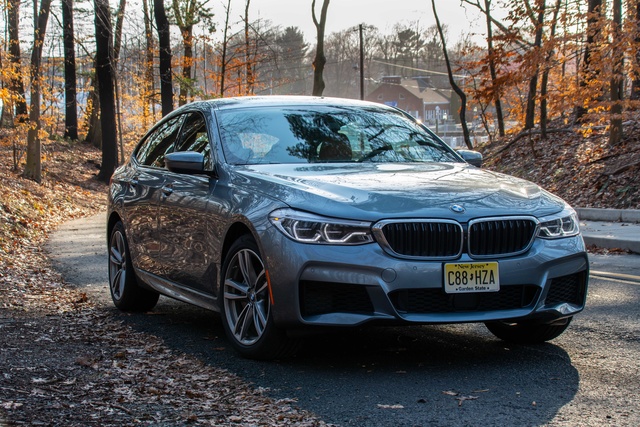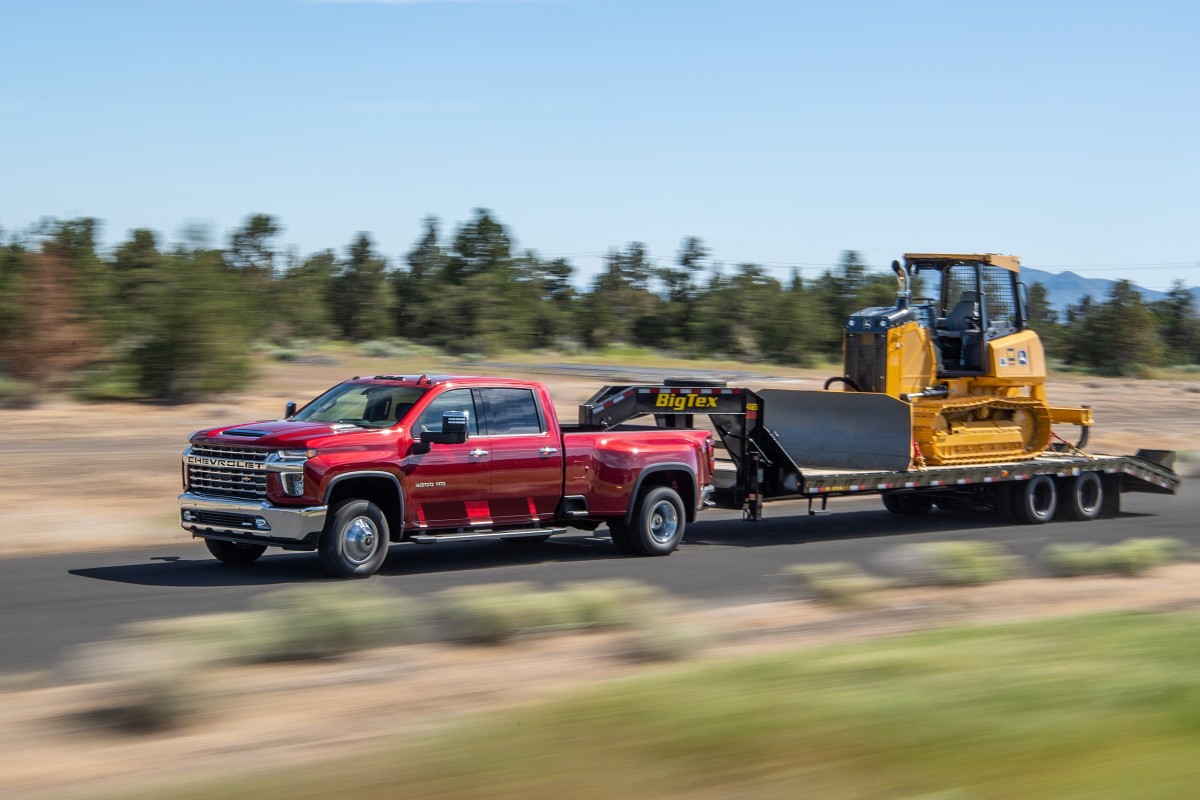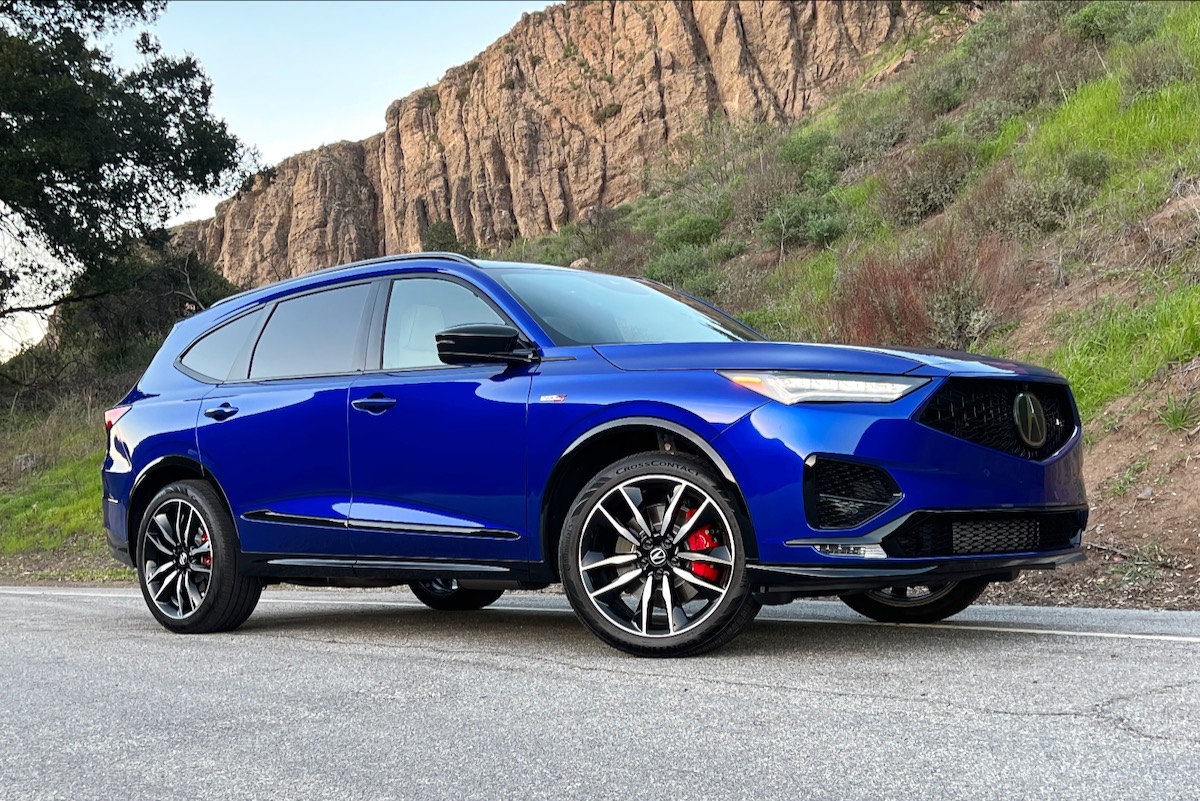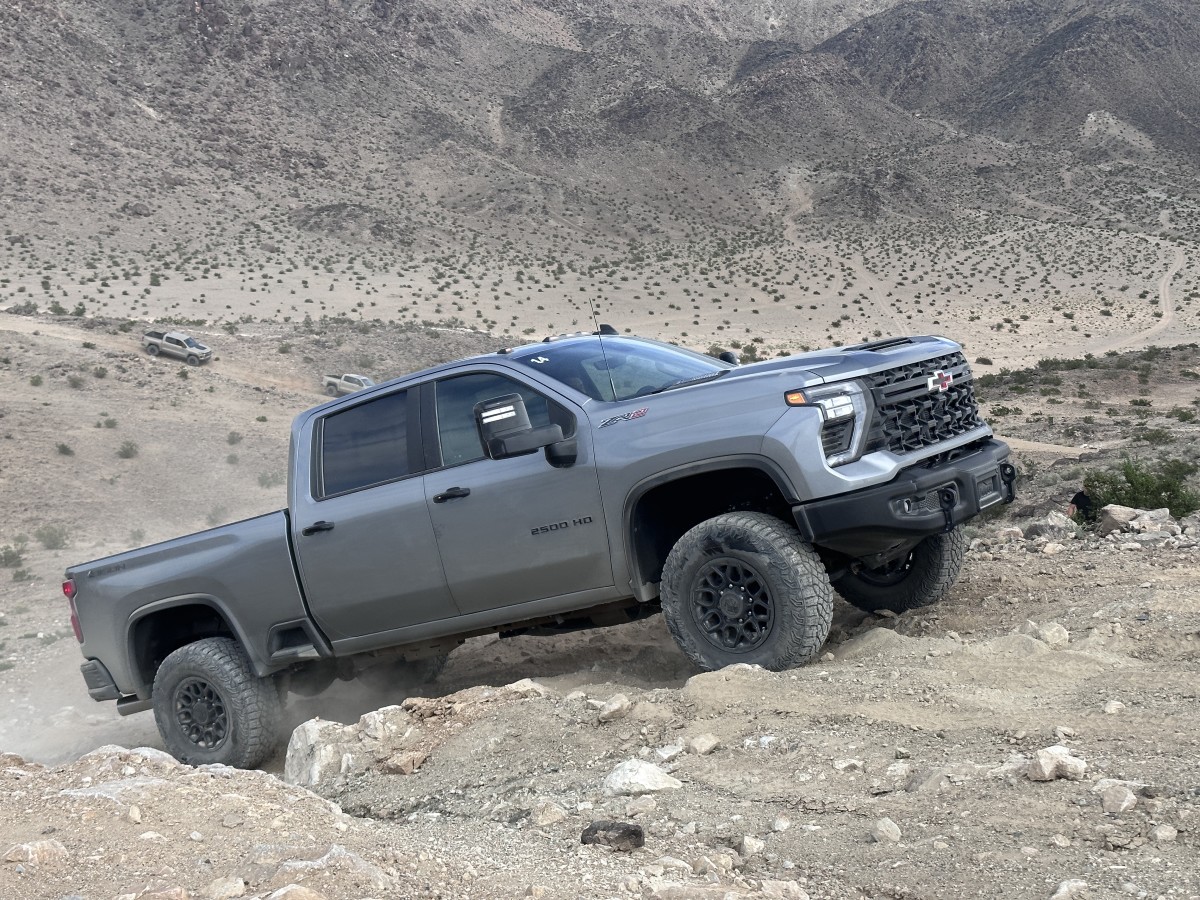The BMW 6 Series has come and gone from the German automaker’s lineup twice now. Each time, it’s been a sleek, performance-oriented machine with a strong emphasis on style. But as the automaker has focused on other product lines, its fortunes have ebbed and flowed.
Today, the original E24 6 Series is a bona fide classic now and a serious collector car in M6 form. The second-generation E63 is a relatively affordable luxury Gran Turismo. It’s also a wildly complicated car—it’s not cheap to buy or maintain, and when things go really wrong, the bills can be huge.
Used cars that compete with the 6 Series include Mercedes E-Class two-door models, the Porsche Panamera sedan, the Maserati GranTurismo and GranCabrio, Lexus LC, and even high-end sports cars like the Jaguar F-Type.
None are cheap or easy to maintain, but they are luxurious and rewarding to drive. Here, we’ve broken down each 6 Series generation and included some advice about what to pay for and what to avoid.
BMW 6 Series Buying Guide: Cost, Reliability, and the Best Years to Buy
- Frequently Asked Questions
- BMW 6 Series Pros and Cons
- BMW 6 Series Generations
- Fourth generation (2018-2019)
- Third generation (2011-2019)
- Second generation (2003-2010)
- First generation (1976-1989)
Frequently Asked Questions
Which BMW 6 Series years are the best?
Among the modern 6 Series designs, the 2011 to 2018 models stand out as the most reliable and robust of the lot. The G32 series 6 Series hatchback sedan, offered in 2018 and 2019, is also quite reliable, but it’s a car of very different character than the other designs and more like a 5 Series. The original 1976 to 1989 "E24" version is also very well made and engineered well enough to almost feel like a modern car, even nearly 50 years after they were first designed. E24s can still be used every day in places where cars don't rust (which, admittedly, excludes most of Canada).
What are the worst BMW 6 Series years?
The revived second-generation E63/E64 models are the most problematic. They’re lots of fun to drive, and even though the styling strongly split opinions when they were new, they’ve aged very well. But they’re also highly complex vehicles that are now up to 20 years old, and not all have been properly maintained. The V8 in these cars is a demanding and expensive beast to maintain, and many jobs can cost thousands of dollars. The optional V10 is even more prone to problems and is even costlier to fix. Many electrical issues can crop up, too, which means these have the worst reliability record among the 6 Series generations.
Is a used BMW 6 Series a good deal?
Not really. The 6 Series an expensive car that people buy for style and performance, and if those are your priorities, it’s a good choice. But it’s less practical than BMW’s similar four-door cars (or more traditional four-doors, if you’re talking about the 6 Series Gran Coupe). It’s expensive to buy, insure, and maintain and depreciates pretty quickly, but it also offers rewarding driving dynamics and exclusivity. Whether that’s a good deal depends on your priorities.
BMW 6 Series Pros and Cons
Pros:
- Almost every version is a serious performer
- Glamorous and cool
- Lots of luxury and tech features
Cons:
- Impractical, even in “Gran Coupe” form
- Expensive to buy and maintain
- No manual transmissions in later models
BMW 6 Series Generations
Fourth generation (2018-2019)
Though it’s no longer in production, the last BMW 6 Series is the most conventional-looking car in the group. Officially called the “6 Series Gran Turismo,” this car is a hatchback version of the 5 Series sedan, and it replaced the 5 Series Gran Turismo.
It was new for 2018, but BMW continued selling the previous-generation 6 Series models alongside it that year and the Gran Coupe alongside the newer Gran Turismo model in 2019 before introducing a new 8 Series Gran Coupe for model year 2020. If you’re shopping for a 2018 6 Series Coupe, Gran Coupe, or Convertible, or a 2019 Gran Coupe, see the third-generation model overview for more information. Although the Gran Turismo is a five-door hatchback, its styling and profile lean hard toward the familiar sedan shape, and this car was closely based on the 5 Series. BMW dropped it from the North American lineup at the end of 2019, but it continued on sale in other countries until 2023.
The 6 Series Gran Turismo came as only one model, the 640i xDrive Gran Turismo, powered by a 3.0-litre inline six-cylinder engine making 335 horsepower and 330 pound-feet of torque. xDrive all-wheel drive was standard, as was an eight-speed automatic transmission. It was a little heavier than the related 540i, but had more or less the same driving personality. Its advantage over the 5 was space, with 5 centimetres of additional rear legroom and up to 1,840 litres of cargo space with the seats folded, a huge amount for a sedan.
BMW also offered lots of advanced features, including adaptive cruise control, gesture control, a head-up display, and a slew of interior colour and fabric choices. It also used the then-newest iteration of BMW’s infotainment software, the easy-to-learn iDrive 7.0. But consumers did not care for this car’s styling and sales were very slow, so BMW dropped it from the lineup. As it turns out, other countries weren’t that fond of it either, and only 509 cars were sold in Germany in 2022, its penultimate year on the market.
Because so few were sold, there’s almost no data on the 640i Gran Turismo’s reliability record, but being so close to the 540i sedan and built on the same line, one might expect it to be very similar. Consumer Reports and other outlets give that car only average or slightly below average ratings for quality and reliability. This 6 Series isn’t easy to find as a used car since BMW only sold it for two years. It’s hard to get a read on Canadian pricing since these rarely come up on the used market here. We spotted clean, low-mileage examples in the $45,000 range, which could be considered reasonable since the 2019 BMW 6 Series Gran Turismo started at $76,900 new in the Canadian market.
Third generation (2011-2019)
BMW redesigned the 6 Series in 2011. The company offered three body styles: a coupe, convertible, and, for the first time, a low-slung four-door gran coupe. The Convertible arrived first, in early 2011, while the coupe came a few months later that spring. The Gran Coupe debuted more than a year later at the 2012 New York and Geneva Auto Shows. This generation’s M6 debuted alongside the Gran Coupe and came in all three body styles. In 2014, the ultimate 6 Series, the factory tuner-car Alpina B6, joined the lineup.
Early on, this generation of 6 Series came only as the 650i, powered by a twin-turbo 4.4-litre V8 making 400 horsepower and 450 pound-feet of torque. In 2013, the V8 got even more power, 445 horses and 480 pound-feet of torque, but more significantly, BMW added the 640i. This version featured a turbocharged 3.0-litre inline six with 315 horsepower and 330 pound-feet of torque.
While it’s less powerful, it’s cheaper to buy and maintain today, and less trouble-prone than the V8. In Canada, all 6 Series were sold with xDrive all-wheel drive and an eight-speed automatic transmission. The M6, also new in 2013, used a pumped-up version of the 4.4-litre V8 with 560 horsepower and 500 pound-feet of torque, good for zero-to-96 km/h in 4.1 seconds despite the car’s 1,995-kilogram (4,400-pound) weight. M6s could have a seven-speed dual-clutch automatic or a six-speed manual.
Very well-heeled buyers could also choose the Alpina B6, a factory-issue tuner car based on the 6 Series. Alpina is BMW’s high-end luxury tuning house, and its products are more rarified than those of Mercedes-AMG, which eventually became an internal division of Mercedes. The B6 featured a version of the 4.4 litre V8 with different turbochargers and a variety of interior and exterior upgrades, making it faster and more luxurious than the M6. Alpina built versions of all three body styles, but only the B6 Gran Coupe was offered in North America, with 540 or 600 horsepower depending on the year, and only with all-wheel drive.
BMW did not change much about the 6 Series mechanically from 2014 onward, but the cars got a visual refresh in 2015 with new headlights and bumpers, a tech update in 2016 with a new 10.2-inch infotainment touchscreen (the previous screen had been clickwheel-activated) running iDrive 6.0, a reasonably intuitive and comprehensive infotainment system at the time. There were also driver assistance features, including blind spot monitoring, traffic sign recognition, and adaptive cruise control, though most were optional.
As in previous eras, this 6 Series is an engaging and vigorous performer, and it’s stylish too. Although its soft looks aren’t for everyone, they’ve aged better than some more controversial BMW designs. It’s also a very comfortable car, though the back seat is snug even in the Gran Coupe. It may have four doors, but they’re mostly for show.
This 6 Series is also more durable and reliable than the one that preceded it, although reliability and service data on the model as a whole is thin. Judging by BMW owners’ feelings about it, the 640i models are the most trouble-free of the bunch, and the M6 the most high-strung. None are cheap to maintain, though thanks to stiff depreciation, the lineup as a whole is more affordable than you’d think.
A clean 640i with under 120,000 kilometres should start around $25,000, with prices for the newest and best models rising to around $40,000. There are pricier ones out there, but this should net you a good example. V8s are more common in Canada and are priced similarly, and newer models and convertible models will be at the high range of the spectrum. The M6 is a more expensive proposition, starting around $45,000 but going as high as $60,000 for good, clean, well-maintained examples. There’s very little data on pricing for the Alpina B6 Gran Coupe for the Canadian market; consider that it carried a new vehicle starting price of $135,000.
Although BMW introduced the fourth-generation 6 Series Gran Turismo for 2018, the third-generation 6 Series models continued on sale that year, and the Gran Coupe into 2019. All three bodies were replaced by the new-in-2019 8 Series, which is broadly similar.
Second generation (2003-2010)
BMW first hinted at a revived 6 Series with the Z9 concept, shown at the 1999 Frankfurt motor show. The production version, bowing in 2003, looked surprisingly like the Z9, for good and bad. The sleek coupe shape, defined by what BMW called “flame surfacing” was a love it or hate it affair, with no middle ground. While the coupe debuted mid-way through the 2003 model year, the Convertible did not appear for almost another six months, in early 2004.
The “E63” generation 6 Series was based on a shortened 5 Series platform, with many lightened components like an aluminum hood and doors, and carbon-fibre-blend fenders. Unlike the 5 Series, the 6 Series was strictly rear wheel drive, with no all-wheel drive option in this generation. This car also featured lots of high-tech gear that was truly cutting edge in the mid-2000s, including an infotainment screen, soft-close doors, adaptive cruise control with stop and go, lane departure warnings, and a head-up display.
A click wheel ran that infotainment screen, and not everyone liked these early versions of BMW’s iDrive software. They’re basic but clunky by today’s standards, but BMW was also one of the very first companies to offer this type of feature in the North American market, and it was still in its infancy then. At the very least, the interior was comfortable, luxurious, and logical in the finest BMW tradition. The back seat is very small, but BMW made no illusions about this 6 Series being anything but a 2+2 Grand Tourer when it was new.
Though BMW offered many engines in other countries, North America was strictly limited to the V8 and V10 models. 2004 and 2005 cars (645ci) used a 4.4-litre V8 making 325 horsepower and 330 pound-feet of torque, but 2005 and later cars used a 4.8-litre V8 with 360 horses and 360 pound-feet (650i). The M6, which joined the lineup in 2005, was powered by BMW’s “S85” V10, shared with the M5, with 500 horsepower and 383 pound-feet of torque.
Buyers could choose from six-speed manual or six-speed automatic transmissions, while M6s could have a seven-speed automated manual, which BMW referred to as a “Sequential Manual Gearbox” or “SMG.” This last transmission is problematic to maintain, and most enthusiasts prefer conventional manuals.
Unfortunately, these “N62” V8s need lots of costly maintenance over time. Some jobs that aren’t too hard on most cars, like valve cover and timing chain gaskets, are complicated on these V8s, meaning big labour bills. The coolant crossover pipe, located between the two banks of cylinders, can cost $7,000 or more to replace (the entire engine must be removed), and typically fails somewhere between 130,000 and 160,000 kilometres. A serious leak from this part can have even worse consequences. Some cars are fitted with “Dynamic drive,” with hydraulic anti-roll bars, which can also be expensive to fix.
The E63 6 Series is a fabulous drive, but the cost of ownership is very high, and reliability is a mixed bag. These cars are very cheap now, with a few sub-150,000-kilometre examples even selling for less than $10,000 and most good ones costing no more than $17,000. M6s usually cost between $27,000 and $40,000, but be prepared to have a rainy-day fund. Examples that have had the necessary maintenance done and documented are the way to go.
First generation (1976-1989)
When the original “E24” 6 Series first appeared, many BMW fans were disappointed that it looked heavier and seemed less sporty than the outgoing “E9” 3.0CS coupe it replaced. But over time, it won their respect, and by the time it ceased production more than a decade later, it was a fan favourite. In part, this has to do with regulations. The old E9 design was beloved for its hardtop profile, delicate looks, and racing reputation, but its structure and style dated back to the early 1960s. There was no way it would continue to pass safety regulations into the 1980s.
After deliberating on how to design it for much of the early 1970s, BMW created the E24 to fit the world that gave us emissions rules and impact bumpers, but did so in ways that kept true to the ethos of the earlier cars. Designed around the first-generation 5 Series chassis but visually similar to the first-generation 7 Series, the E24 was penned by one of BMW’s greatest design stars, Paul Bracq. Its shark nose shape, no longer a hardtop, aged beautifully over time (and continues to do so). It also boasted a robust crash structure—note that the E24 was still considered a safe car in 1989.
In 1977, when the cars first started arriving in North America, BMW was still very much a niche enthusiast brand like Alfa Romeo or Peugeot, but already its appeal as a status symbol was beginning to grow its audience. The 6 Series, which Road & Track described as “one of the best driving experiences you’re ever likely to have” in 1978, was a perfect blend of enthusiast coupe and flashy status machine. In the 1980s it was hugely popular on TV, with star turns in Remington Steele and Moonlighting, which only boosted the car’s cachet and BMW’s profile. Today, the car is a bona fide classic, even though it doesn’t command the sky-high prices of its E9 predecessor. You’ll still pay at least $30,000 for a good one, and a Euro-spec, low-kilometre M6 might cost you six figures.
Because it was produced for so long, there are many different versions of the E24, but inline-six-cylinder engines power all of them. Although these were common in the U.S. market and you’ll find both those and Euro-spec units south of the border, used examples are rare in Canada, likely due to our more challenging climate.
The 1977 and 1978 original version was the 630CSi (1976-77), with a 3.0-litre, 176-horsepower six. From 1979 to 1984, the car used a 3.2-litre version of the six with 177 horsepower (1979), 174 horsepower (1980 and 1981) or 181 horsepower (1982 to 1984). In 1985, the car was fitted with a 3.4-litre six, which was good for 182 horsepower, and rose to 208 horses for the final years of 1988 and 1989. The car also got a comprehensive update in 1982, featuring lots of engineering refinements from the similarly updated second-generation 5 Series.
Early on, buyers could choose a four-speed manual or a three-speed automatic transmission, but these eventually gave way to a five-speed Getrag manual and, from 1983, a four-speed ZF automatic. Most U.S. versions are automatics, and manuals definitely command a premium.
Towards the end of the run there were two very special E24s, the M6 and the L6. The M6, evolved from the European M635CSi, used a 256-horsepower version of BMW’s 3.5-litre 38 inline six, based on the engine from the M1 supercar. Along with the original M5 and M3, it was among the very first BMW M production cars to reach North American shores. The L6 was an ultra-luxury model with finer interior materials and pretty much every optional feature, and there was a similar L7 on the 7 Series. BMW fans liked the M cars, but the L Series cars did not last very long.
Euro-spec machines, L6 and M6 models, and manual transmission cars all command a price premium over the standard automatic models. But none of these E24s are cheap anymore, and prices have steadily risen over the last 15 years. With proper maintenance and care, the E24 is reliable and easy to enjoy for two. The trunk and back seat are small, but the car’s plenty of fun to drive, and most examples have functional air conditioning and fine interior appointments.
The E24 was canceled when BMW introduced the original 8 Series, which was intended as a direct replacement but quite a bit costlier. It never really caught on, and production of the original 8 Series ended in 1999. It was effectively replaced by the revived E63 6 Series in 2003.







